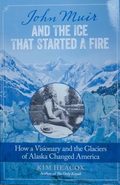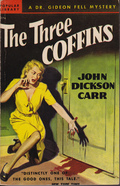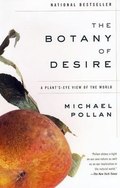My reading list is back! Tardy once again, though all but the shiniest bits were ready months ago. You won’t want to read the entire droning post, of course, but since a wrong turn on the information superhighway led you here, you might as well hit page down a couple of times. Perhaps a shiny book cover will catch your eye. Surely you are looking for a good book to read. (You are undoubtedly hip to the sweet color-coded indicators of placements on my Great Novels , Great Sci-fi and Fantasy Novels and Great Crime Novels lists, right? See handy links to said lists at the bottom of this very page.)
-
 Gerald L. Schroeder - The Hidden Face of God (2001)
Gerald L. Schroeder - The Hidden Face of God (2001)
As part of a book swap of sorts, I read this book and the other party to the swap read Kenneth Miller’s Finding Darwin’s God. I think I can say that neither party experienced an epiphany. Minds were not changed.
I really tried to read this with an open mind. I read nothing about the book or its author before finishing it. Nevertheless I found it to be just about what I expected it to be: a variation on the “God in the gaps” theme. Where science cannot yet fully explain something to his satisfaction, Schroeder sees proof of the invisible hand of “wisdom.” He isn’t alone, of course. The last 1,000 years—give or take—is littered with discredited “beyond here lies God” non-explanations to difficult questions.[1]
Was I able to set aside my biases and evaluate it fairly? How would one ever really know the answer to that? That I just wrote “I found it to be just about what I expected it to be” is prima facie evidence that I was unable to do so. I am satisfied that I tried, though, and however unsatisfying that may be to those who wish to believe otherwise, I can’t imagine what I could write that might be more helpful. What I can say to those who may read this book is this: take note of every time he writes “everyone knows” or “scientists still can’t explain” and look into his claims (presented without evidence). You may be surprised to find what he conveniently ignores.
-
 18 Philip K. Dick - The Three Stigmata of Palmer Eldritch (1965)
18 Philip K. Dick - The Three Stigmata of Palmer Eldritch (1965)
This novel is set in the 21st century—this one—when global warming has rendered Earth almost uninhabitable. Which of course may soon be scientific fact. (Sci-fa?) Because of conditions on their sweltering home planet, humankind is scattered across the solar system in barely tolerable colonies. (Still sci-fi, at least for the foreseeable future.) Colonists use an illegal drug, Can-D, to ward off excruciating boredom. Palmer Eldritch brings to the solar system a new, more powerful and more dangerous drug, Chew-Z. A weird, uniquely-PKDish, dystopian, philosophical-religious conflict ensues. Recommended! (To be clear, I recommend the book, not the dystopian conflict.)
-
 Richard Dawkins - River Out of Eden (1995)
Richard Dawkins - River Out of Eden (1995)
Dawkins’s metaphor asks us to picture a copiously-branching river of genes flowing through time. From Eden? Metaphorically, yes: the cranky evolutionary biologist hasn’t gone Ken Hamm on us. In this brief book, the author touches on the themes familiar to readers of his The Selfish Gene (1976) and The Blind Watchmaker (1986). It is a useful summary that preaches to the choir, but is likely left unread by those who might benefit most from it. To paraphrase Chesterton, “it is not that Darwinism has been engaged [by its creationist critics] and found wanting; it has been found distressing and left unengaged.”[2] A shame, really.
Dawkins’s “descendants are common, ancestors are rare” is a simple but important concept to grasp.
-
 Kim Heacox - John Muir and the Ice that Started a Fire (2014)
Kim Heacox - John Muir and the Ice that Started a Fire (2014)
My dad has long raved about John Muir and his writings, but I am just now learning more about the iconic conservationist. Such as his adventures in Alaska on and around glaciers. I have always associated Muir with California and, especially, with the Yosemite Valley. But I was intrigued by this book which touted his importance in establishing Glacier Bay National Park, a stunning place I was lucky to see (from a cruise ship) in 2007. It turns out that Muir got a little lot closer to the action than I did. Crazily close! I can’t imagine how he lived to write about it, but we can all be grateful he did. What an amazing man!
This is a delightful book that, while focused on Muir’s Alaska adventures, provides enough general biographical detail to inform neophytes like me, while creating a strong appetite for more. Only as I finished it did I realize its author lives in the small-town gateway to Glacier Bay of Gustavus, Alaska. The same town my daughter lived and worked in several years ago when she helped build a trail with AmeriCorps. And yes, she met the author while she was there. It’s a small world even in the great expanse of Alaska’s beautiful wilderness.
-
 3 John Dickson Carr - The Three Coffins (1935)
3 John Dickson Carr - The Three Coffins (1935)
This interesting novel was chosen by a panel of writers and critics as the best example of the “locked room” mystery subgenre. It even breaks the fourth wall[3] as a character in the book gives a lecture on the types of locked room murders and how they are achieved. In the course of it, he acknowledges that he is in fact a character in a novel. It’s a weird moment. But in the end I wasn’t as impressed as other readers seem to have been by the solution to this one: my guess is that very few readers solve it (this one didn’t). This may make the murderer clever—though not clever enough to fool Carr’s amateur sleuth Gideon Fell—but the author less so. For my money, Sjowall’s and Wahloo’s The Locked Room (from their Martin Beck series) is more fun.
This novel was first published in Britain as The Hollow Man. It was renamed for the American market.
-
 Michael Pollan - The Botany of Desire (2001)
Michael Pollan - The Botany of Desire (2001)
My daughter recommended this book to me. I owe her one. Polan traces the relationships between four different plants—the apple, the tulip, the potato, and marijuana—and man. He makes the point that each of the four has exploited human desire (for sweetness, beauty, food, and intoxication) to advance the prospects of its species. I enjoyed especially the story of John Chapman, better known as “Johnny Appleseed,” and the apple. It seems there were gaps in my elementary school education’s coverage of it. Two green thumbs up!
-
 44 Edith Wharton - The Age of Innocence (1920)
44 Edith Wharton - The Age of Innocence (1920)
Thematically similar to her The House of Mirth, but of course it is. I can’t imagine why an intelligent woman of letters wouldn’t write novels about society’s treatment of women as the property of men. If only they were allowed to write laws at the time. Divorce? Not for a woman who wishes to participate in “society.” It is true that Wharton set this novel a generation in her past and that things had changed for women by its 1920 publication date, but even now—100 years later—women are second-class citizens over much of the globe. Here in the United States, for example.
The novel is much more than a tract on human rights. It is a beautifully written tragic love story by one of America’s finest novelists.

 Gerald L. Schroeder - The Hidden Face of God (2001)
Gerald L. Schroeder - The Hidden Face of God (2001) 18 Philip K. Dick - The Three Stigmata of Palmer Eldritch (1965)
18 Philip K. Dick - The Three Stigmata of Palmer Eldritch (1965) Richard Dawkins - River Out of Eden (1995)
Richard Dawkins - River Out of Eden (1995) Kim Heacox - John Muir and the Ice that Started a Fire (2014)
Kim Heacox - John Muir and the Ice that Started a Fire (2014) 3 John Dickson Carr - The Three Coffins (1935)
3 John Dickson Carr - The Three Coffins (1935) Michael Pollan - The Botany of Desire (2001)
Michael Pollan - The Botany of Desire (2001) 44 Edith Wharton - The Age of Innocence (1920)
44 Edith Wharton - The Age of Innocence (1920)